56 juillet 1809 Bataille de Wagram — Theatrum Belli

Battle of Wagram Stock Photo, Royalty Free Image 49973194 Alamy
Wagram order of battle - Wikipedia Wagram order of battle Archduke Charles, commander of the Austrian army On the 5 and 6 July 1809, north of Vienna, took place one of the most important confrontations in human history until then, the Battle of Wagram.

BATTLE OF WAGRAM 5th & 6th July 1809 sheet 2. Austria, 1848 antique map Stock Photo Alamy
Battle of Wagram 1809 : Schlacht : Bataille : Batalla : Battaglia . "The most beautiful sight I have ever seen in my life then unfurled before our eyes. Within a radius of about a mile, we could see the entire Austrian army (.)" - Dezydery Chlapowski, Napoleon's Guard Cavalry .

Battle of Wagram Stock Photo Alamy
The last of Napoleon's decisive pre-1812 victories, the Battle of Wagram (5-6 July, 1809) was a bloody victory against Austria fought on the Marchfeld - a vast plain north-east of Vienna. It came six weeks after Napoleon's initial attempt to cross the Danube River had been stopped
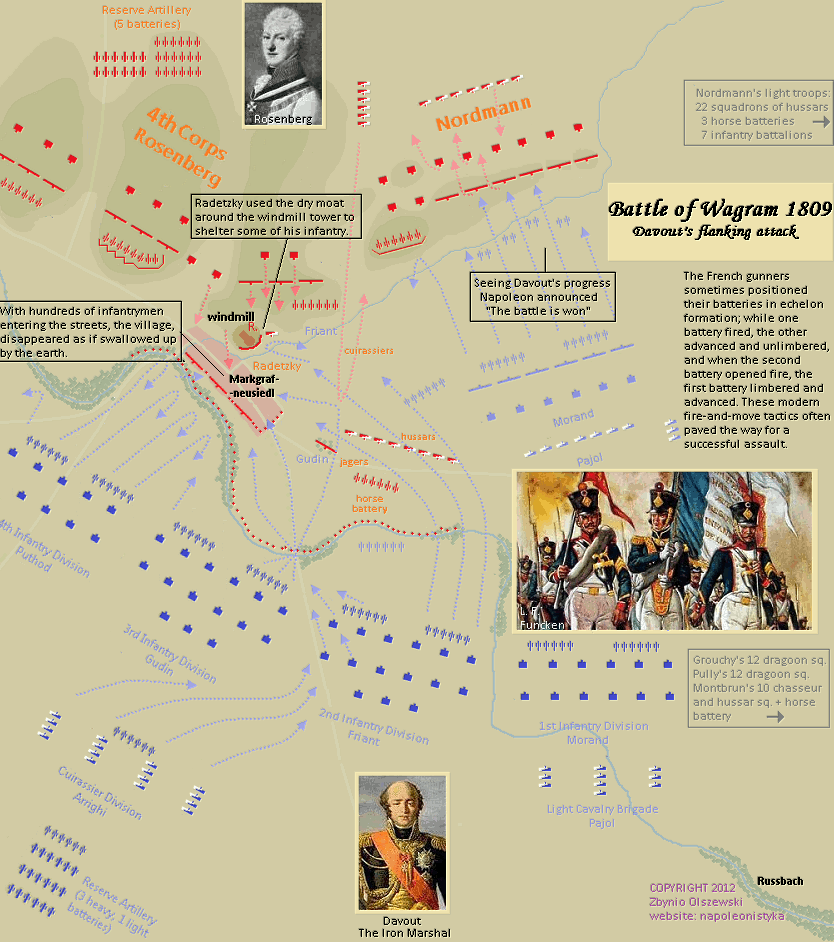
Battle of Wagram 1809 Schlacht Bataille Batalla Battaglia
Britain enlisted the help of Austria and Russia in 1805 to defeat Napoleon. Still, Napoleon's Grand Armee decisively defeated the Austrians at Ulm and a combined Russian and Austrian army at Austerlitz. Austria had little choice but to sue for peace, while Tsar Alexander retreated home but refused to make peace with Napoleon.

Pin on Battles
The Battle of Wagram was the deciding battle of the War of the Fifth Coalition (1809) during the Napoleonic Wars (1803-1815). Date: Fought east of Vienna, near the village of Wagram, the battle occurred on July 5-6, 1809. Commanders & Armies: French Napoleon I 180,000 men Austrians Archduke Charles 155,000 men Battle Summary:

56 juillet 1809 Bataille de Wagram — Theatrum Belli
Wagram order of battle From Wikipedia, the free encyclopedia On the 5 and 6 July 1809, north of Vienna, took place one of the most important confrontations in human history until then, the Battle of Wagram.
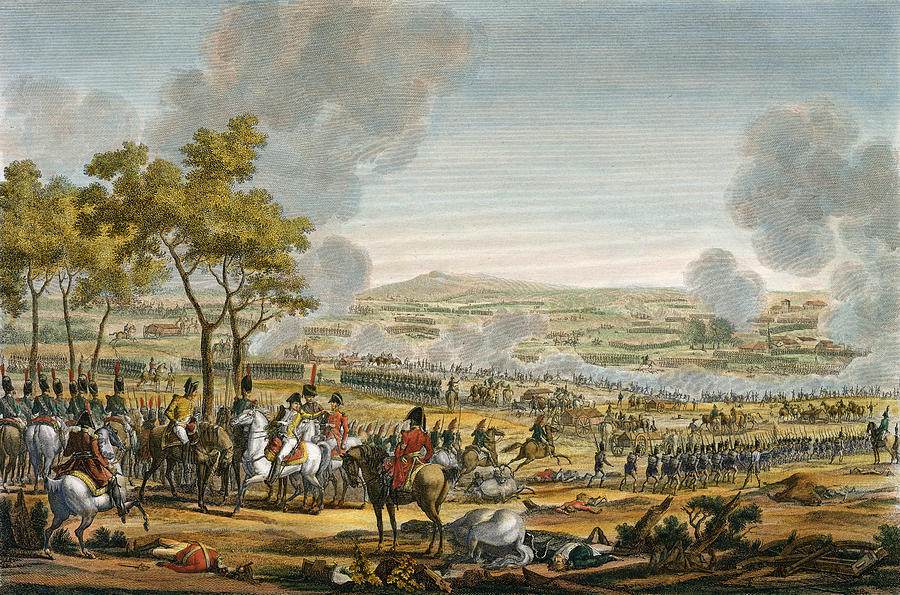
The Battle Of Wagram, 7 July 1809 Drawing by Jacques Francois Joseph Swebach
The museum of the Battle of Wagram give's an overview of the battle that took place here on the 5th and the 6th of July 1809. The battle was fought between the French Empire and the Austrian Empire. The Austrian Army was led by Archduke Charles the French Army was led by Napoleon I. In the museum of the local history there is a setup of an old.
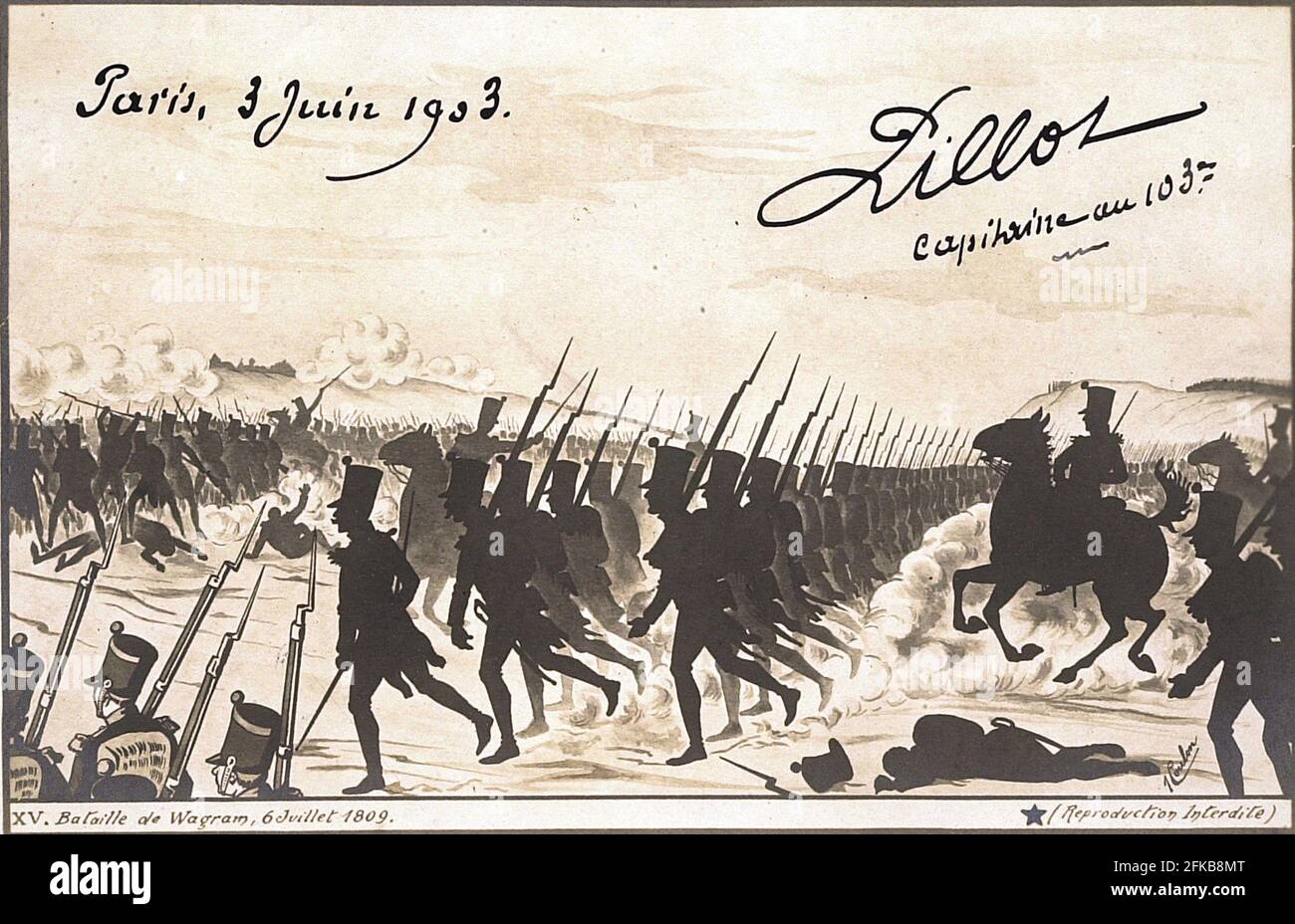
The Battle of Wagram. 6th July 1809 Paris, Fondation Napoléon Stock Photo Alamy
2. Structure shown is the army's "official" order of battle as of 25 May. See below for the actual organization on the battlefield at Raab. 3. The 25 May report apparently deducted casualties from the Battle of St. Michael (25 May). 4. Numbers in parentheses indicate the number of battalions/squadrons.
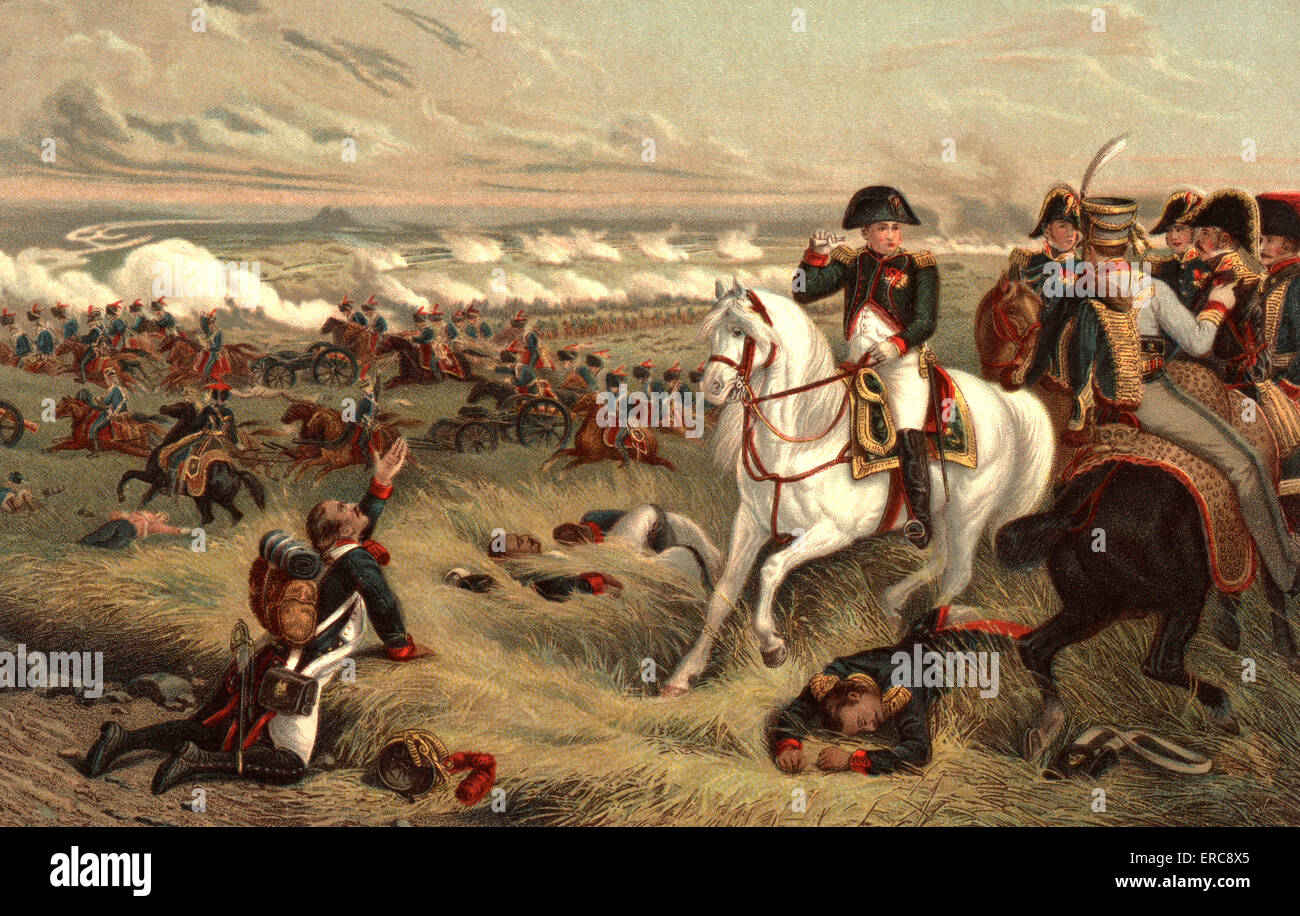
JULY 5 1809 NAPOLEON ON WHITE HORSE AT THE BATTLE OF WAGRAM A CRUCIAL FRENCH VICTORY AGAINST
Order of Battle for Wagram. July 5, 1809: Austrian Army:. Austrian Army formations not at Wagram. 8th Corps - Chasteler (Based at Saint Grodt) 1st Division - Fenner. 53rd line - 4 bases: 52nd line - 2 bases: Bruck landwehr - 1 base militia: 2nd Division - Berelat. 26th line -
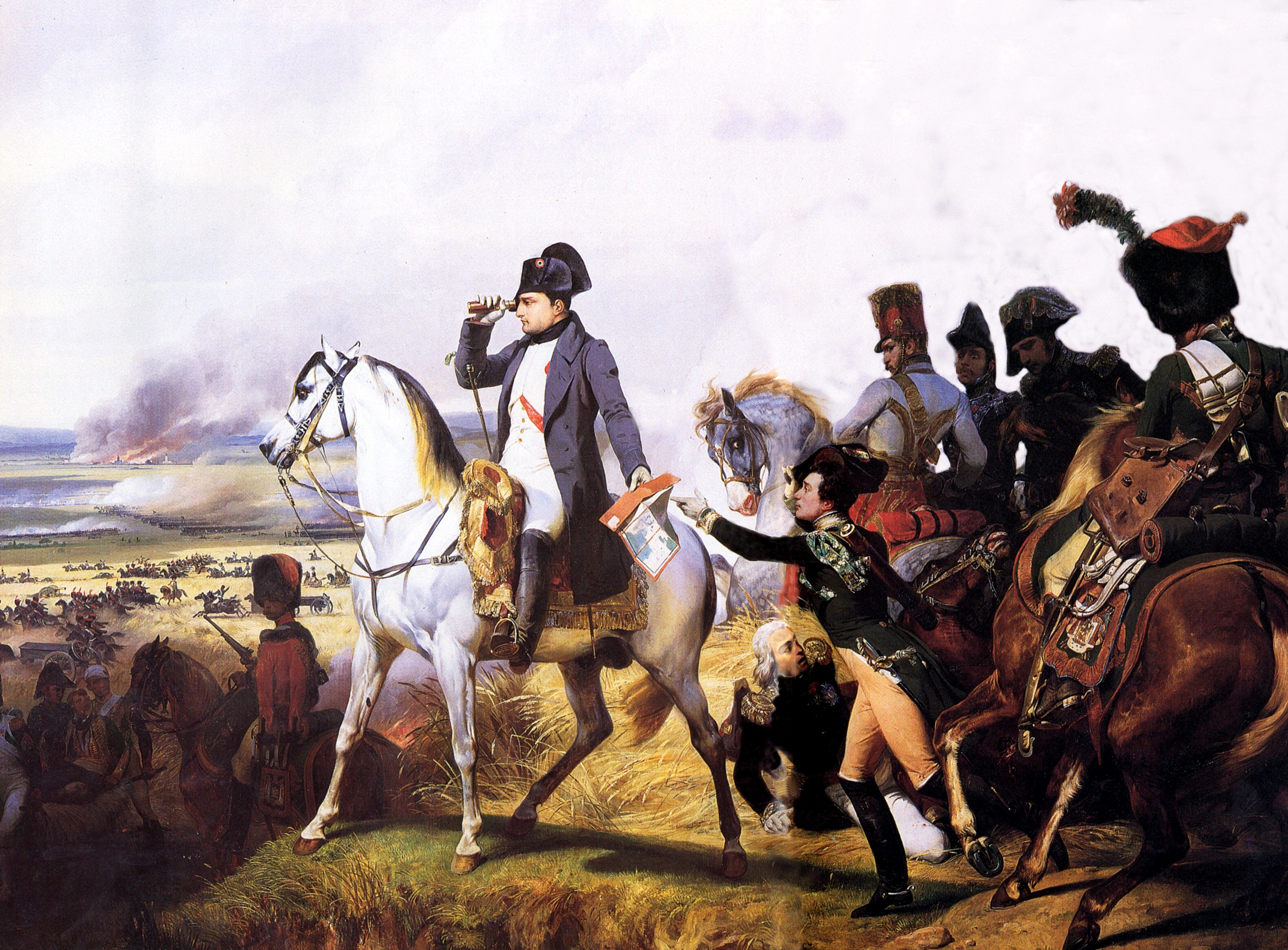
The Battle of Wagram
The Battle Overview. The Battle of Wagram began on the 5th July 1809 with Napoleon's crossing of the Danube. The Austrian command had not realised that Napoleon had moved a large number of his army across the Danube. By midday, Napoleon had moved almost 140,000 men over the river. The French advanced with Marshal Massena on the left, Marshal.

'Battle of Wagram', 1809, (c1835). Artist Francois Stock Photo Alamy
Austrian Order-of-Battle at Wagram: 5 - 6 July 1809 The Advance Guard. By Stephen Millar. Commander: Nordmann, FML Armand von. Infantry Brigade Reise, GM Freiherr von. Infantry Regiment Graf Bellegarde Nr. 44: 3 battalions Jakordowsky von Studnitz, OB Infantry Regiment Marquis Chasteler de Courcelles Nr. 46: 3 battalions Otto von Kirchberg, OB

Battle of Wagram Alchetron, The Free Social Encyclopedia
The ensuing battle of Wagram, with its emphasis on heavy firepower and massive bludgeoning troop movements, was to last two and a half days and was the largest ever battle to date in human history. Combined losses (deaths, wounded, prisoners, lost) amounted to more than 80,000 men. This was war on a new level.

The Battle of Wagram (56 July 1809) was a military engagement of the Napoleonic Wars and ended
The Battle of Wagram (5-6 July 1809) was one of the largest and bloodiest battles of the Napoleonic Wars (1803-1815). It resulted in a pyrrhic victory for French Emperor Napoleon I (r. 1804-1814; 1815) whose army crossed the Danube River to defeat Archduke Charles' Austrian army.

Map of the Battle of Wagram July 56, 1809 Wagram, Battle, Map
The Battle of Wagram ( [ˈvaɡram]; 5-6 July 1809) was a military engagement of the Napoleonic Wars that ended in a costly but decisive victory for Emperor Napoleon 's French and allied army against the Austrian army under the command of Archduke Charles of Austria-Teschen.
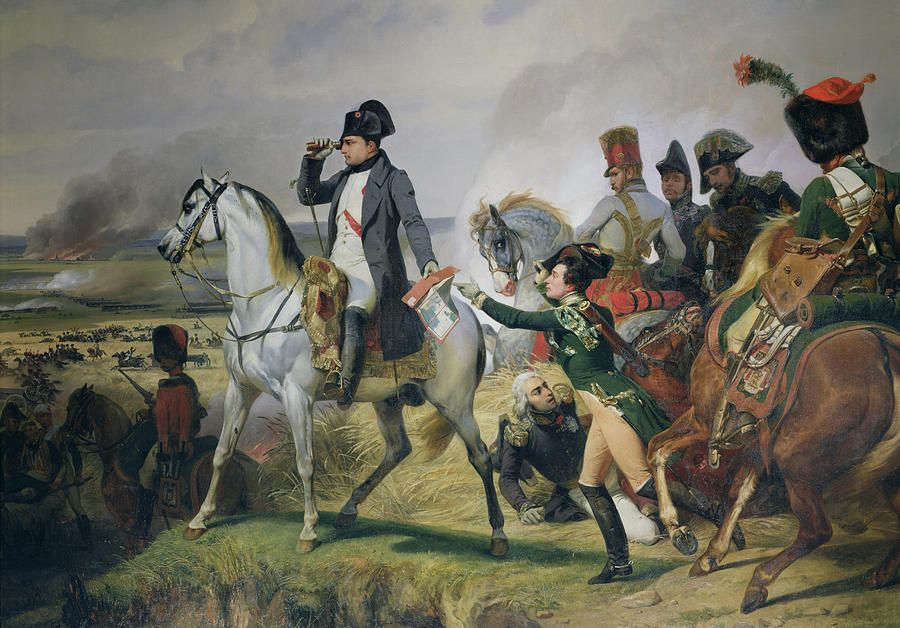
The Battle Of Wagram, 6th July 1809, 1836 Oil On Canvas Photograph by Emile Jean Horace
Battle of Wagram. Date and place. July 5th and 6th, 1809 at Wagram, around the Lobau Island, fifteen kilometers north of Vienna, Austria. Involved forces. French army (131,000 men) under Emperor Napoleon the First. Austrian army (139,000 men) under Archduke Charles of Austria, Duke of Teschen.
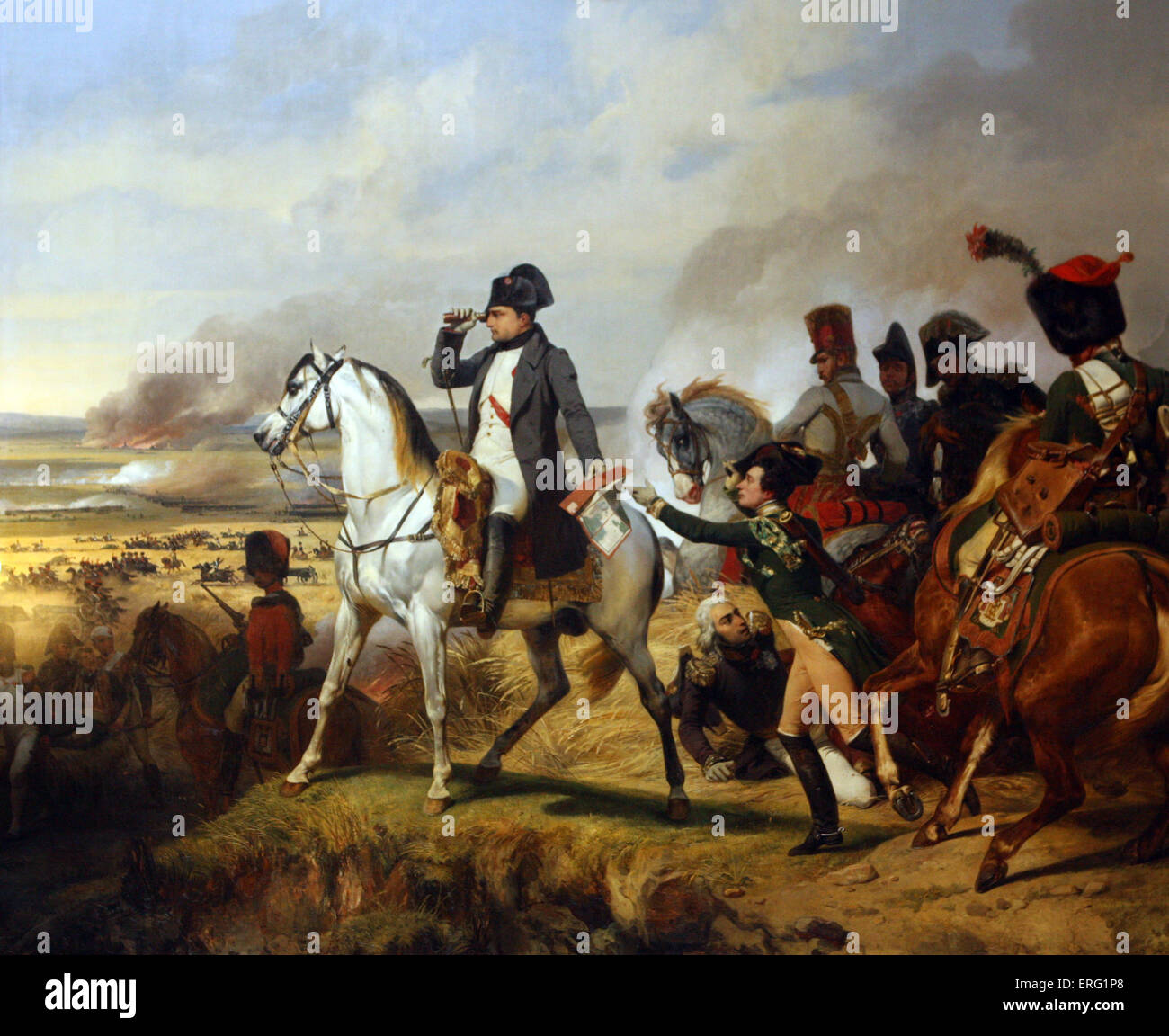
Bataille de Wagram Battle of Wagram won by Napoleon 6 July 1809 Stock Photo Alamy
In 1809 Napoleon confronted his implacable continental foe, the Austrian Empire. The court in Vienna was a nest of hawks these days. The overthrow of the Spanish Bourbons had hit Austria almost with the force of the news of Louis XVI's execution in 1793. Austria also wanted to recover her standings in Europe and lost holdings in Germany and Italy.